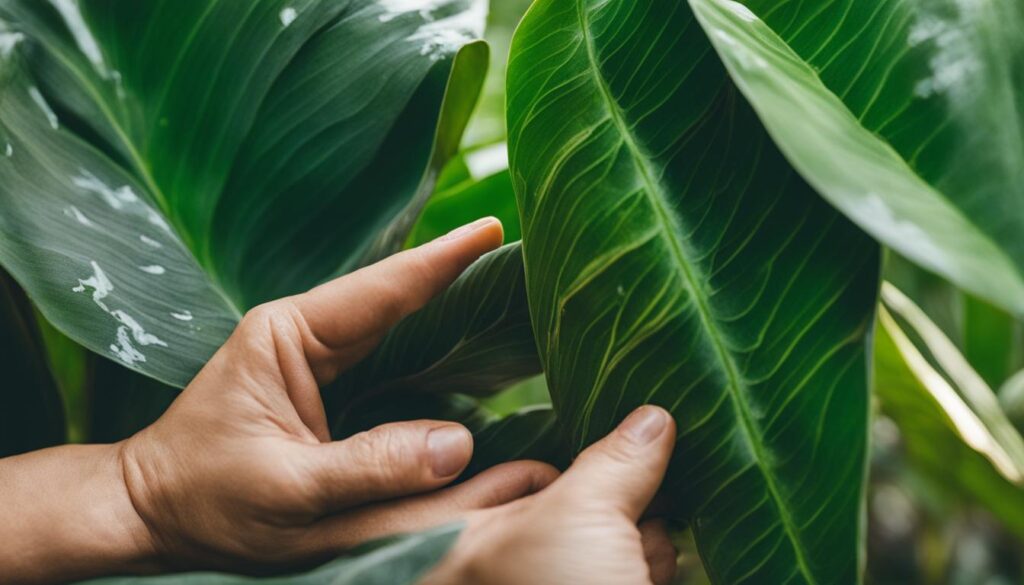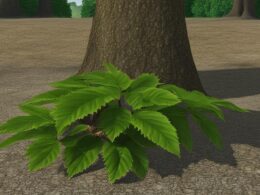If you’re a proud owner of a rubber plant, you may have encountered the disheartening issue of its leaves falling off. Don’t worry, we’ve got you covered! In this guide, we’ll walk you through the possible causes of leaf drop and provide helpful tips to troubleshoot and revive your rubber plant for lush growth.
When it comes to rubber plant care, understanding the underlying reasons for leaf drop is crucial. One common cause could be a sudden change in light levels. As you transition your plant from outdoors to indoors, the shift in lighting can trigger leaf loss. To prevent this, ensure a smooth acclimation by gradually introducing your plant to lower light levels. Additionally, consider providing supplementary plant lights to compensate for the reduced natural light.
Another culprit behind leaf drop could be pests. Scale bugs, in particular, are notorious for infesting rubber plants and causing leaf damage. Keep a close eye on your plant and inspect it regularly for signs of pest infestation. Should you discover any pests, treat your rubber plant with an insecticide, such as neem oil, to combat the issue effectively.
Low humidity and exposure to drafts can also contribute to leaf loss. Rubber plants prefer a humid environment, so consider misting the plant regularly or placing it on a tray of water-filled pebbles to increase the moisture level around the foliage. Additionally, protect your plant from cold drafts, which can lead to stress and subsequent leaf drop.
Over-fertilization and over-watering can have adverse effects on your rubber plant as well. Ensure you’re providing the right amount of nutrients and water, allowing the soil to dry out partially between waterings. A balanced watering routine will contribute to healthier foliage and reduce the chances of leaf drop.
By addressing these potential causes and implementing the recommended solutions, you can troubleshoot leaf drop in your rubber plant and revive it for lush, vibrant growth. Now, let’s dive into the specifics of how to take care of rubber plant leaves to ensure your plant thrives!
How to Care for Rubber Plant Leaves
Proper care is crucial for maintaining the health of your rubber plant leaves. When it comes to watering, finding the right balance is key. Rubber plants don’t like to be too dry or too moist. Allow the top inch of soil to dry out before watering again.
Providing bright, indirect light is essential for the plant’s well-being. Avoid placing it in direct sunlight, as this can lead to leaf damage. Rubber plants also prefer temperatures between 65 and 80 degrees Fahrenheit.
Proper acclimation is important when transitioning the plant from outdoors to indoors. Gradually introduce it to its new environment to minimize stress and leaf drop.
Dealing with Pests and Leaf Damage
Pests can pose a significant threat to your rubber plant, causing leaf damage and ultimately leading to leaf drop. Common pests like aphids, scale bugs, thrips, and spider mites are notorious for feeding on rubber plant leaves and weakening their overall health. It’s essential to regularly inspect your plant for signs of infestation, such as small contusions or discoloration on the leaves.
If you notice any signs of pest activity on your rubber plant, swift action is necessary. One effective method is to use insecticidal soap sprays, which can help eliminate and control these pests. However, keep in mind that multiple applications might be needed to ensure complete eradication of the infestation.
In addition to pests, other factors can contribute to leaf damage and drop. Environmental stressors and improper acclimation, particularly when transitioning the plant from outdoors to indoors, can further weaken the plant’s leaves. Addressing these issues promptly will help safeguard the health and vitality of your rubber plant.
Can the Troubleshooting Tips for Rubber Plants also be Applied to Revive a Strawberry Plant?
Yes, many troubleshooting tips for rubber plants can be applied to revive a strawberry plant, considering the similar life cycle strawberry plant. Both plants may suffer from overwatering, inadequate light, or nutrient deficiencies. Adjusting these factors can help revive a struggling strawberry plant just like with a rubber plant.










